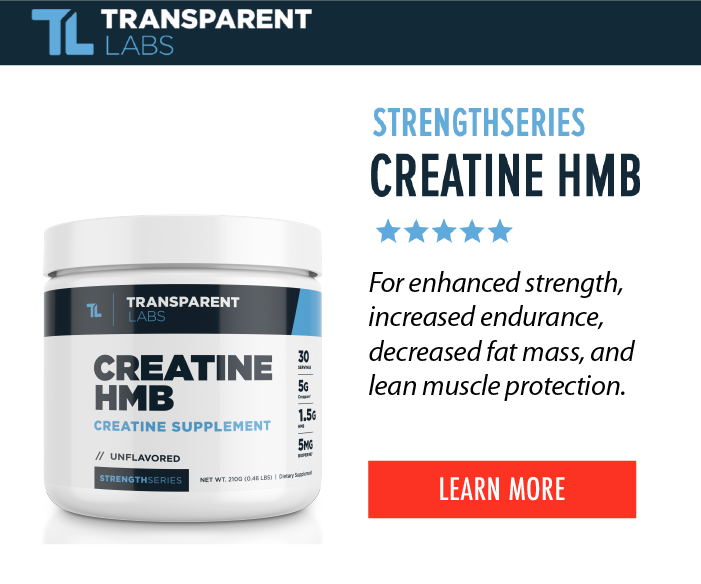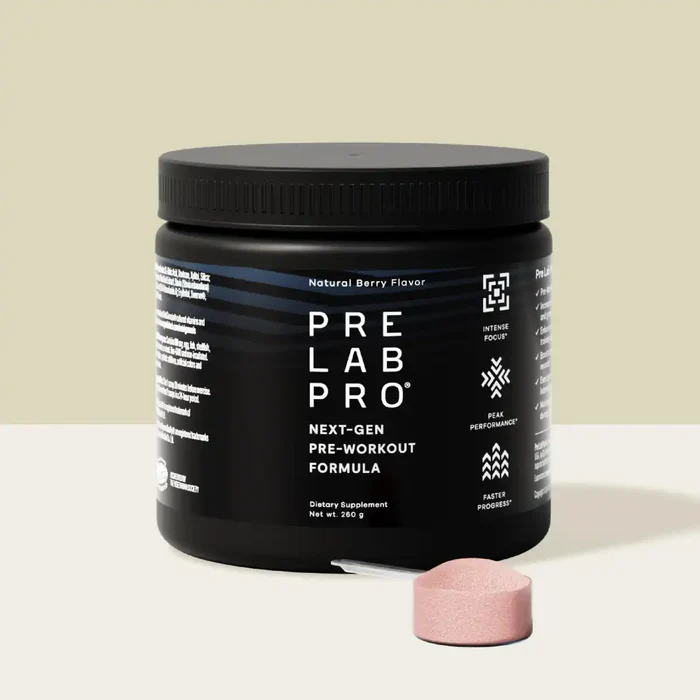Creatine: The Good, The Bad, and The Bulked-up
By Martin Ebner, Head PT and sports nutrition specialist at Ebylife
The Benefits of Creatine
Creatine plays a critical role in cellular metabolism. It is an amino acid that is found mostly in your body's muscles as well as in your brain. Many know the role amino acids play in protein synthesis, but limitations in the ability to transport and/or store creatine can impair metabolism. Increasing the availability of creatine in tissue may enhance cellular metabolism and thereby lessen the severity of injury and/or disease conditions, particularly when oxygen availability is compromised, like during high-intensity exercise.
The body's liver, pancreas, and kidneys can make about 1 to 2 grams of creatine per day. This means that creatine is not an "essential" amino acid or one that humans can only get from food. See my blog, Lysine, Tyrosine, and Beans Oh My! for more information on amino acids. Although the body makes creatine, most people need more than their bodies can produce. The average person gets enough creatine through seafood and red meat, although active people, especially athletes and bodybuilders, generally need creatine supplements.
Many health and therapeutic benefits of creatine have been reported because its role in athletic performance, muscle building, and exercise performance has been studied extensively by sports medicine experts, such as Richard Kreider. However, the medical community is also interested in how the effects of creatine may promote general health as we age and how creatine supplementation may help individuals recover from injury or manage chronic disease. Research shows that creatine supplementation has several health and therapeutic benefits throughout one's lifespan. Besides having health benefits for older adults, the use of creatine is being studied to treat muscular dystrophy as well as neurological diseases like Huntington’s disease and Parkinson’s disease.
How Does Creatine Work?
Every activity you perform uses creatine. Resistance training and building muscle mass use a lot of creatine! Every push-up, curl, or stride uses a substance called adenosine triphosphate, or ATP. ATP is the fuel for very intense skeletal muscle contractions.
In order for ATP to be created, creatine phosphate has to combine with adenosine diphosphate, or ADP, which resides in the cell. You are not limited in the amount of ADP you have present. However, you are limited in the amount of ATP you store. The limiting factor for this is how much creatine is present. Once your creatine stores run out, ATP can no longer be created, and muscular contractions come to a halt.
It's not hard to see how creatine is going to help you. By increasing your creatine intake, either through nutrition or supplementing with creatine, you can ensure that your level of muscle creatine, or phosphocreatine stores, are higher. This way, you produce more ATP each and every workout which allows you to do more work during each session, speeding muscle growth.
Related article: Muscle Growth: 12 Essential tips to build more muscle
Foods High in Creatine
Creatine has been shown to build muscle and strength faster than when not consuming creatine. As mentioned earlier, it is not considered an essential amino acid because our bodies make some. However, If you are very active unless you take a creatine supplement, it’s recommended that you aim for an additional 1 to 2 grams per day from natural food sources. While you can get enough creatine from natural food sources, if you don’t eat animal products, you may want to consider supplementing to increase your creatine levels.
Foods high in creatine, per 100 g serving (about a half-cup for most food):
Salmon - 0.9 g
Beefburger - 0.9 g
Pork - 0.7 g
Cured ham - 0.6 g
Lamb - 0.5 g
Chicken breast - 0.4 g
Tuna - 0.4 g
Cod - 0.3 g
Hot dog - 0.2 g
Creatine is synthesized from the amino acids arginine, glycine, and methionine. For those who don't eat meat and don't take sports supplements, eating foods high in these three amino acids is recommended.
For Lacto/Ovo vegetarians, all three are found in milk and cheese. Methionine is also found in eggs.
For vegans (and everyone else of course!) foods high in these three amino acids include:
Arginine:
Seeds, especially pumpkin and sesame
Nuts, especially walnuts, almonds, pine nuts, hazelnuts, pecans, cashews, and brazil nuts
Legumes like beans, peas, chickpeas, and peanuts
Seaweed, usually sold as dried seaweed
Spirulina
Whole grains like oats, corn, buckwheat, and brown rice
Glycine:
Seeds, especially pumpkin and sesame
Nuts, especially pistachios, almonds, and peanuts
Seaweed, usually sold as dried seaweed
Spirulina
Watercress and spinach
Soybeans, cooked or in soy products like tofu and tempeh
Quinoa
Methionine:
Soybeans, cooked or in soy products like tofu and tempeh
Nuts, especially brazil nuts, but also peanuts, cashews, and pistachios
Seeds, especially hemp, pumpkin, and sesame
Beans, especially white, kidney, black, and great northern beans
Whole grains, especially teff and quinoa, but also wild rice, Kamut, and brown rice
Related article: The Ripped Vegan: Can You Build Muscle on a Vegan Diet?
Creatine Supplements
According to an article from the Journal of the International Society of Sports Nutrition (ISSN) entitled Creatine Supplementation with Specific View to Exercise/Sports Performance creatine is one of the most popular and widely researched natural supplements. Most studies have focused on the effects of creatine monohydrate supplementation on performance and health. However, many other forms of creatine are available as sports supplements.
Regardless of the form, creatine supplementation has been shown to increase muscle strength, fat-free body mass, and lean muscle fiber when paired with high-intensity exercise and bodybuilding. These studies have shown that resistance training with creatine supplementation increases muscle size and non-fat weight gain more so than resistance training alone or with a placebo. It benefits all forms of exercise such as high-intensity sprinting or endurance training.
Not everybody responds the same way to creatine supplementation. However, it is generally accepted that supplementing increases muscle creatine levels and promotes faster post-workout regeneration of ATP. This will increase exercise performance and promote greater training improvements.
How Much Creatine Do You Need?
The above-mentioned ISSN article states that creatine supplementation in amounts of 0.05 g/lb of bodyweight combined with resistance training improves training adaptations at a cellular and sub-cellular level. That means that a 150 lb person would need 7.5 g of creatine, a 200 lb person would need 10 g, and a 250 lb person would need 12.5 g. However, this would include the creatine ingested with your food.
So a 200 lb person trying to add 10 g of creatine to their daily intake could easily get that amount by eating a 300 g serving of salmon, a handful of seeds or nuts, and taking supplements, like the ones mentioned above.
Is The Creatine Loading Phase Necessary?
Many trainers and health advisors suggest that one doesn't need to maintain an extra-high level of creatine intake forever. Instead, taking an extra-high dose for a period of time, then lowering one's intake to a more moderate level. Since creatine is stored in your muscles and used for intense bursts of energy, like during resistance training, it is advantageous that your muscle cells have as much stored as possible. Research suggests that a creatine loading phase can rapidly increase your creatine stores, allowing you to reap the benefits faster.
A Healthline article called Creatine 101 — What Is It and What Does It Do?, says that many people who supplement start with a loading phase, which leads to a rapid increase in muscle stores of creatine. They say that to load with creatine, take 20 grams per day for 5 to 7 days. This should be split into four 5-gram servings throughout the day.
Absorption may be slightly improved with a carbohydrate or protein-based meal due to the related release of insulin. Following the loading period, take 3 to 5 grams per day to maintain high levels within your muscles. As there is no benefit to cycling creatine, you can stick with this dosage indefinitely.
If you choose not to do the loading phase, you can simply consume 3 to 5 grams per day. However, it may take 3 to 4 weeks to maximize your stores. They also advise that since creatine pulls water into your muscle cells, it is advisable to take it with a large glass of water and stay very well hydrated throughout the day.
Insulin-like Growth Factor
Insulin-like Growth Factor, or IGF, is an anabolic hormone that stimulates the growth of bone, muscle, and other tissues in the body. Due to its role in stimulating an increase in muscle mass, IGF is important in building muscle and improving overall body composition. Most IGF is secreted by the liver for use throughout the body. However, muscle cells also secrete IGF.
A study conducted by the American College of Sports Medicine found that after a 5-day loading phase with creatine monohydrate, a group of healthy participants had a significant increase in the amount of IGF in their muscle cells compared to the group that was treated with a placebo. Surprisingly, a 30 to 40% increase in IGF was found before any exercise was even done! Not surprisingly, then, was that when the participants undertook high-intensity exercise, the group that loaded their muscles with creatine monohydrate experienced a much greater anabolic response.
And the good news is that according to Effects of Creatine Supplementation and Resistance-Exercise Training on Muscle Insulin-Like Growth Factor in Young Adults there were no differences in IGF between vegetarians and non-vegetarians. These findings indicate that creatine supplementation during resistance training increases intramuscular IGF concentration in healthy men and women, independent of whether or not they eat meat.
Creatine Improves Brain Health
Creatine supplements have been shown to increase levels of creatine in the brain by nearly 10%, which may promote brain health. It’s thought that taking these supplements enhances brain function by improving the energy supply to the brain and providing cellular protection.
In one study, people who were supplemented with 8 grams of creatine per day for five days reduced mental fatigue during mathematical calculations, compared to those taking a placebo. In fact, studies have found that creatinine supplementation may improve short-term memory and intelligence in healthy people.
The Healthline article mentioned above states that your brain also stores phosphocreatine and requires lots of ATP to function properly. They also say that supplementing may improve the following conditions:
Alzheimer’s disease
Parkinson’s disease
Huntington’s disease
Ischemic stroke
Epilepsy
Brain or spinal cord injuries
Motor neuron disease
Memory and brain function in older adults
They also warn that vegetarians tend to have low creatine levels because they don’t eat meat, which is the main natural dietary source. In one study on vegetarians, supplementing led to a 50% improvement in a memory test and a 20% improvement in intelligence test scores.
Related article: Mind Lab Pro Nootropic Review: Give Your Brain a serious boost!
Creatine Side Effects
While the positive effects are obviously many, what about any adverse effects of creatine supplementations? In fact, it is one of the world’s most tested supplements and has an outstanding safety profile. The Healthline article above says that although it can benefit older adults and those with reduced stores, creatine exhibits little effect on brain function in healthy adults.
Water Retention: However, a different Healthline article, Does Taking Creatine Make You Fat? points to water retention as a type of weight gain that can occur with creatine supplementation. It draws water into your muscle cells which then hold onto this water, resulting in bloating or puffiness around your arms, legs, or stomach. Your muscles will likely appear larger, even if you’re new to exercise and resistance training. In the first week of taking oral creatine, some people gain about 2 to 4.5 pounds, mainly due to water retention. But don't worry! As your muscles become bigger, the excess water weight becomes less noticeable, and you’ll appear less swollen.
Non-fat weight gain: If you are concerned with your weight, remember that as you increase your muscle mass, your body weight will naturally increase as well. However, one thing you need not worry about is non-muscle weight gain, namely fat. But despite a seemingly rapid increase in weight, creatine will not make you fat. Creatine actually has very few calories on its own. And if you think about it, creatine helps you burn energy, so it is actually helping you to NOT get fat!
Creatinine: Creatinine, confusingly, is a by-product of creatine metabolism. And in case you were considering drinking less water to avoid water retention, think again! I know I don't need to remind you of the importance of staying hydrated while bodybuilding and working out, but just in case, check out my recent blog: Water: The Miracle Chemical that Helps Build Muscle. However, you can add to the list of reasons to stay hydrated, the need to clear out creatinine. Creatinine in and of itself is not considered harmful, but it can have a bad reputation in some people's minds because creatinine levels are often checked during blood tests and health screenings. A high level of creatinine can indicate kidney problems. So it's not the creatinine itself that's the problem, but rather it can be an indicator of other problems. But still, stay hydrated!
Diabetes and Creatine: Creatine may affect blood sugar levels, so talk to your healthcare provider before supplementing with creatine if you have diabetes. Also don't use creatine if you are taking any medication or supplement that could affect your blood sugar levels.
Take Aways
Stay hydrated.
Muscle contractions require creatine.
The human body makes some creatine.
Non-vegetarians get a significant amount of creatine from their diets.
Vegetarians/vegans do not get creatine from their diets, but can boost their body's creatine production by eating foods high in arginine, glycine, and methionine.
Low-intensity exercise probably does not require supplementing.
High-intensity exercise and resistance training probably does merit supplementing.
Building muscle mass is significantly faster in those who supplement with creatine.
Loading phase for athletic performance: start with 10 grams to 20 grams of creatine a day for a week; followed by a daily maintenance dose of 3 to 5 grams.
One of the effects of creatine supplementation may be increased brain health.
There are few, if any, serious side effects or safety concerns from supplementing with creatine.



